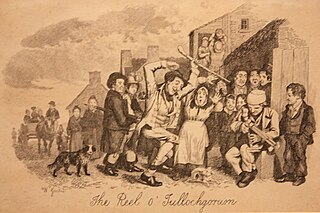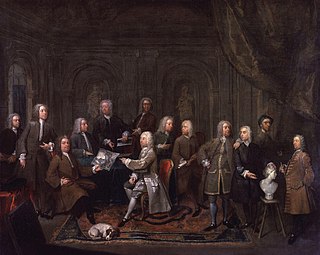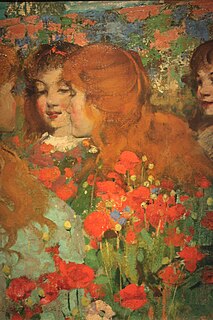 W
WRichard Adams (1791–1835) was a Scottish painter and architect, who built the Anglican Cathedral of St. John the Baptist of Buenos Aires.
 W
WJohn Macdonald Aiken (1880–1961) was born in Aberdeen. He was a painter in oil and watercolour, an etcher and stained glass artist. After serving a six-year apprenticeship as a draughtsman with the lithographer Robert Gibb RSA (1845–1932), he studied at Gray's School of Art in Aberdeen, at the Royal College of Art in London under Gerald Moira (1867–1959) and in Florence.
 W
WJohn Bogle was a Scottish miniature painter.
 W
WRobert John Cameron Brough ARSA was a Scottish painter born near Invergordon, Ross and Cromarty.
 W
WRobert Bryden (1865–1939) was a Scots artist and sculptor.
 W
WSir George Chalmers, Bart., a native of Edinburgh and a pupil of Allan Ramsay, exhibited portraits at the Royal Academy from 1776 to 1790.
 W
WWilliam Clark was a Scottish artist specialising in paintings of ships. His works are held in the National Maritime Museum and other collections.
 W
WJohn Cochran or Cochrane was a Scottish portrait miniaturist, a stipple and line engraver and a painter of watercolours. Cochran exhibited his portraits at the Royal Academy between 1821 and 1823, and at the Suffolk Street Gallery from 1821 to 1827.
 W
WWilliam Crozier was a Scottish landscape painter.
 W
WAlexander Brownlie Docharty (1862–1940) was a Scottish painter, mainly in oils. He was the second son of Joseph Docharty and Elizabeth Brownlie. Joseph Docharty was a designer of calico prints; Alexander left school at the age of thirteen to join his father. He studied part-time at the Glasgow School of Art, attending Robert Greenlees' evening classes.
 W
WJohn Donaldson was born at Edinburgh in 1737, and distinguished himself as a miniature painter, both in enamel and water-colours. In the year 1764, and again in 1768, he obtained the premium given by the Society of Arts for the best picture in enamel. He occasionally amused himself with the point, and etched several plates of beggars, after Rembrandt, which possess considerable merit. He died in London in 1801.
 W
WJames Drummond FSA (1816–1877) was an artist and the curator of the National Gallery of Scotland from 1868 to 1877. He was also an early photographer.
 W
WThomas Faed RSA (1826–1900) was a Scottish painter who is said to have done for Scottish art what Robert Burns did for Scottish song.
 W
WArthur Ferrier was a Scottish artist, illustrator and cartoonist.
 W
WDavid Foggie RSA, was a Scottish painter, born to parents James and Margaret Foggie.
 W
WWilliam Baxter Collier Fyfe (1836-1882) was a Scottish genre and portrait painter. He was born at Dundee in 1836. He became at an early age a student of the Royal Scottish Academy, and exhibited his first picture of importance, Queen Mary resigning her Crown at Loch Leven Castle, in the Exhibition of 1861; but this was surpassed in later years by The Raid of Ruthven. In 1863 he settled in London, and from that time onward was busily engaged with portraiture, which he varied with landscapes and genre subjects of interest and merit. Some of his most important portraits are those of the Earl and Countess of Dufferin, Admiral Grenfell, Alderman Sir William McArthur, Dr. Lorimer, and John Faed, R.S.A.. He died suddenly at his residence in St John's Wood, London in 1882.5
 W
WWalter Geikie RSA was a Scottish painter.
 W
WGawen Hamilton, easily confused with the later, more prominent artist Gavin Hamilton, was a Scottish painter working in London, a member of the Rose and Crown Club. He was one of the first wave of British born painters of 'conversation pieces' along with contemporaries such as William Hogarth and Charles Philips. These are works that depict groups of friends, families and acquaintances often engaging in a variety of genteel activities such as playing cards or taking tea. Some of Hamilton's pieces depict gatherings of artists and craftsmen such as the Rose and Crown Club itself.
 W
WPeter Alexander Hay (1866–1952) R.I., R.S.W., R.B.C. was a Scottish genre, still-life, portrait and landscape watercolourist. His work was part of the painting event in the art competition at the 1932 Summer Olympics.
 W
WGeorge Henry (1858–1943) was a Scottish painter, one of the most prominent of the Glasgow School.
 W
WWilliam Stewart MacGeorge (1861–1931) was a Scottish artist associated with the Kirkcudbright School. Born in Castle Douglas, lived at 120 King St. He attended the Royal Institution Art School in Edinburgh before studying under Charles Verlat in Antwerp. After becoming influenced by Edward Atkinson Hornel, who had also studied under Verlat, MacGeorge began using brighter colours. William Stewart MacGeorge later married the widow of Hugh Munro and settling in Gifford in East Lothian where he died. His widow bequeathed about 45 of his paintings to Haddington Town Council. He is fictionalised in the 1907 novel Little Esson, by his boyhood friend S.R. Crockett
 W
WJohn Maxwell was a Scottish painter of landscapes and imaginative subjects.
 W
WThomas McIlworth (c.1720—c.1769?) was a colonial American portraitist, mainly active in the area around Schenectady, New York.
 W
WCaroline McNairn was a Scottish figurative painter.
 W
WSir David Murray was a Scottish landscape painter.
 W
WDavid Payne was a Scottish landscape painter.
 W
WRobert Payton Reid A.R.S.A. was a Scottish academic painter.
 W
WJohn Runciman (1744–1768/9) was a Scottish painter known for Biblical and literary scenes. His works include Flight into Egypt and King Lear in the Storm, both in the National Gallery of Scotland.
 W
WThomas Scott, R.S.A., R.S.W. (1854–1927) was a Scottish painter, primarily a watercolourist, born in Selkirk in the Scottish Borders. Scott signed work as Tom Scott and T. Scott.
 W
WAndrew Lawrenceson Smith, also known as Anders Lauritzen Smith, was a Scottish craftsman, woodcutter and painter. He was married to Maren Knudsdatter.
 W
WRichard Waitt was a Scottish painter.
 W
WJames Wales (1747–1795) was a Scottish artist.
 W
WJohn H. "Jock" Wilson was a Scottish landscape and marine painter, president of the Society of British Artists in 1827.
 W
WWilliam Yellowlees was a Scottish painter. He came to Edinburgh in 1812, and studied there under William Shiels, the animal painter. He began practice as a portrait painter and soon became popular, winning the sobriquet of "the little Raeburn", partly by the small size, but more by the excellence of his work. He painted in Edinburgh for about fifteen years, and then moved to London, where he met with much success. Prince Albert was among his patrons. He contributed twenty portraits to the Royal Academy between 1829 and 1845. There is a portrait by him in the Scottish National Portrait Gallery. This self-portrait was identified by a descendant of William Yellowlees, Scottish psychiatrist and musician Alexander John Yellowlees, in the 1970s whilst attending medical school in Edinburgh.